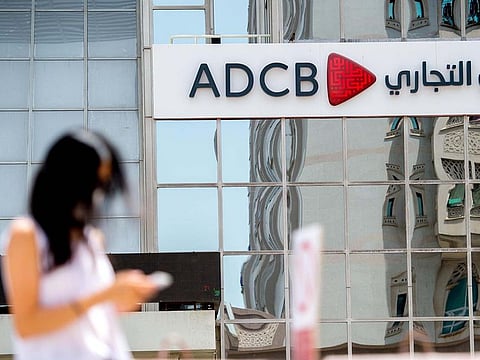ADCB: Cost controls pay off as Q1 profit rises, fee income surges
UAE’s third-largest bank’s Q1 signals shift to diversified earnings post-rate hikes

Dubai: Abu Dhabi Commercial Bank (ADCB), the third-largest bank by assets in the UAE, kicked off 2025 with a notable pivot in its earnings mix, posting a 26% year-on-year surge in non-interest income in Q1 — a clear signal that the bank is rebalancing its revenue model beyond traditional lending.
Non-interest income — fees from services, trading, and other non-lending activities — grew to Dh1.62 billion. At the same time, net interest income (money earned from lending) grew modestly by 3%, totaling Dh3.39 billion.
In terms of key financial metrics, ADCB’s net profit for Q1 reached Dh2.45 billion, marking a 20% increase from the same period last year. The bank’s operating profit, before accounting for impairments, stood at Dh3.55 billion, up 12%.
Efficiency also improved, with the cost-to-income ratio dropping to 29.2%, a 170-basis-point improvement. The return on equity for the quarter was 12.59%, while the bank’s Common Equity Tier 1 (CET1) ratio — a measure of its capital strength — remained solid at 12.56%.
ADCB’s new strategy takes shape
The strong Q1 results come as ADCB rolls out a new five-year strategy, aiming to double its profits to Dh20 billion by 2030. This shift shows the bank is focusing more on services like fees, rather than just relying on lending for growth.
As interest rates stabilize, ADCB is adapting to the changing market by shifting its focus to non-lending income. This approach mirrors a broader trend in the banking sector, where banks are cutting costs and leaning more on fee-based earnings.
Improved efficiency, better credit quality
ADCB has worked hard on improving its efficiency. The bank’s cost-to-income ratio dropped by 1.7%, bringing it down to 29.2%. This shows that ADCB is managing its costs well, which helps it stay competitive.
In terms of credit quality, ADCB is also making positive strides. The bank’s non-performing loan (NPL) ratio improved to 2.24%. This indicates that a lower percentage of its loans are in default compared to before. Additionally, provision coverage — the funds set aside to cover potential loan losses — increased to 260%, up from 150.1% at the end of last year. The bank’s cost of risk, a measure of potential future losses, remains low at just 0.49%.
Solid balance sheet, growth
ADCB’s total assets grew by 14% year-on-year, reaching Dh680 billion. The bank’s net loans grew by 13%, reaching Dh359 billion. Customer deposits also rose by 15%, totaling Dh442 billion. Of these deposits, 45% were from current and savings accounts (CASA), providing the bank with a stable and low-cost funding base, which is helpful as interest rates continue to evolve.
What this means for investors, customers
For investors, ADCB’s Q1 results show that the bank is focused on improving efficiency and diversifying its income sources. While lending growth remains steady, the real highlight is the rise in income from non-lending activities, such as fees, which totaled Dh1.62 billion for the quarter.
The bank’s strong capital position, along with high provision coverage and a conservative cost of risk, shows it’s managing potential risks effectively. Looking ahead, the key challenge will be whether the shift in ADCB’s revenue composition continues to perform well as market conditions change.
Sign up for the Daily Briefing
Get the latest news and updates straight to your inbox



